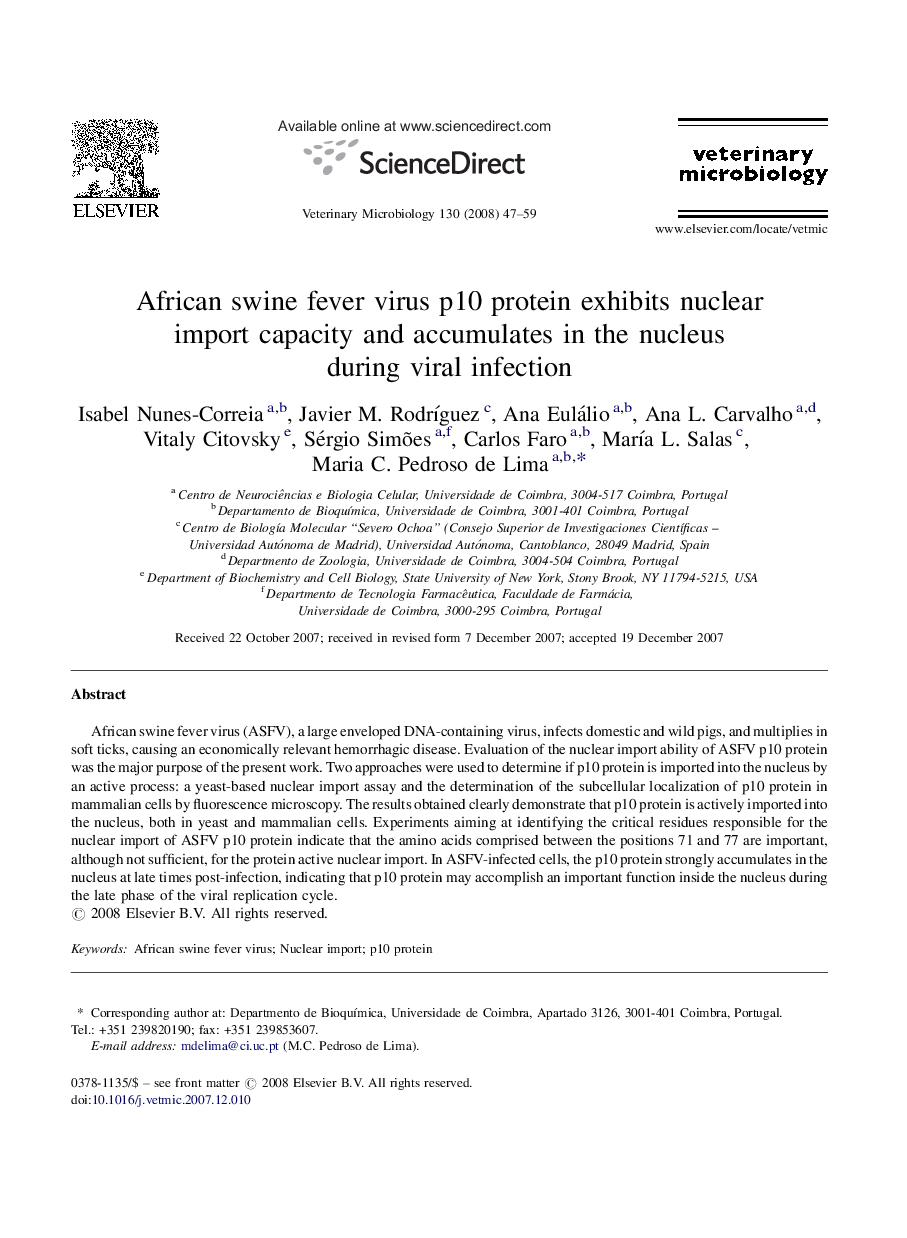| Article ID | Journal | Published Year | Pages | File Type |
|---|---|---|---|---|
| 2468806 | Veterinary Microbiology | 2008 | 13 Pages |
African swine fever virus (ASFV), a large enveloped DNA-containing virus, infects domestic and wild pigs, and multiplies in soft ticks, causing an economically relevant hemorrhagic disease. Evaluation of the nuclear import ability of ASFV p10 protein was the major purpose of the present work. Two approaches were used to determine if p10 protein is imported into the nucleus by an active process: a yeast-based nuclear import assay and the determination of the subcellular localization of p10 protein in mammalian cells by fluorescence microscopy. The results obtained clearly demonstrate that p10 protein is actively imported into the nucleus, both in yeast and mammalian cells. Experiments aiming at identifying the critical residues responsible for the nuclear import of ASFV p10 protein indicate that the amino acids comprised between the positions 71 and 77 are important, although not sufficient, for the protein active nuclear import. In ASFV-infected cells, the p10 protein strongly accumulates in the nucleus at late times post-infection, indicating that p10 protein may accomplish an important function inside the nucleus during the late phase of the viral replication cycle.
